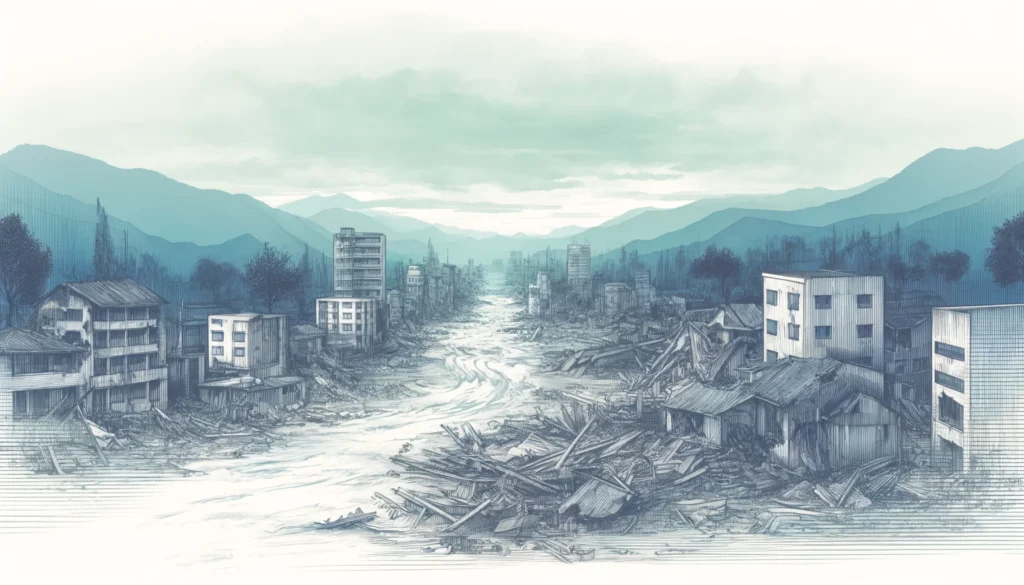
In the face of natural and man-made disasters, artificial intelligence (AI) is becoming a powerful ally. By predicting potential threats, planning effective responses, and coordinating relief efforts, AI technologies are revolutionizing disaster management. This comprehensive guide explores how AI enhances our ability to handle emergencies, ultimately saving lives and reducing damage.
Introduction to AI in Disaster Management
Disaster management involves preparing for, responding to, and recovering from disasters. Traditional methods often fall short due to the unpredictability and scale of such events. However, AI, with its data-processing power and predictive capabilities, offers innovative solutions to these age-old problems.
Predicting Disasters with AI
Early Warning Systems
AI significantly enhances early warning systems by analyzing vast amounts of data to predict disasters more accurately and earlier than traditional methods. Machine learning algorithms can process satellite imagery, weather data, and geological information to forecast events like hurricanes, earthquakes, and floods.
Example: The Global Disaster Alert and Coordination System (GDACS) integrates data from multiple sources to provide real-time alerts and predictive modeling, improving the accuracy of disaster forecasts (UNDRR, 2024).
Machine Learning Models
Machine learning models predict the likelihood and potential impact of disasters by learning from historical data. These models identify patterns and anomalies that might indicate an impending disaster.
Example: AI models developed by the National Oceanic and Atmospheric Administration (NOAA) have significantly improved hurricane prediction accuracy, providing more time for evacuation and preparation (NOAA, 2023).
Planning for Emergencies

Risk Assessment
AI tools assess the risk levels of different regions by analyzing factors such as population density, infrastructure resilience, and historical disaster data. This helps identify high-risk areas and plan mitigation strategies.
Example: The RiskScape platform uses AI to evaluate the vulnerability of different regions to natural disasters, helping policymakers prioritize areas for intervention (GNS Science, 2024).
Resource Allocation
AI optimizes resource allocation by predicting the types and quantities of supplies needed after a disaster. This ensures resources are distributed efficiently, reducing waste and ensuring that help reaches those in need promptly.
Example: IBM’s Watson AI has been used to predict the supply needs for disaster-stricken areas, ensuring that food, water, and medical supplies are allocated effectively (IBM, 2023).
Responding to Emergencies
Real-Time Data Analysis
During a disaster, AI analyzes real-time data from various sources, such as social media, satellite imagery, and IoT devices, to provide situational awareness. This helps responders make informed decisions quickly.
Example: AI-powered tools like Google’s Crisis Map aggregate real-time data to provide a comprehensive view of disaster zones, helping first responders navigate and prioritize their efforts (Google, 2023).
Drones and Robotics
AI-driven drones and robots assess damage, locate survivors, and deliver supplies in areas that are difficult to access. These technologies operate in dangerous conditions, reducing the risk to human responders.
Example: AI-equipped drones used in the aftermath of the 2020 Beirut explosion helped locate survivors and assess structural damage, significantly speeding up rescue operations (TechCrunch, 2023).
AI and Community Engagement
Public Communication
AI chatbots and virtual assistants disseminate information to the public, providing updates on the disaster, safety instructions, and available resources. These tools handle high volumes of inquiries, ensuring people get the information they need promptly.
Example: FEMA’s AI chatbot assists citizens by answering common questions during emergencies, ensuring accurate information is widely available (FEMA, 2024).
Training and Simulations
AI-powered simulations train emergency responders and community members on how to react during different types of disasters. These simulations create realistic scenarios, helping individuals and teams practice their responses in a controlled environment.
Example: The use of VR and AI in disaster response training by the Red Cross has improved the preparedness of volunteers and professionals, making real-life responses more efficient and coordinated (Red Cross, 2023).
Challenges and Ethical Considerations
Data Privacy
The use of AI in disaster management raises concerns about data privacy, especially when personal data is involved. Ensuring that data is used ethically and securely is crucial.
Bias in AI Models
AI models can sometimes reflect biases present in the data they were trained on. It’s essential to continually assess and update these models to ensure they provide fair and accurate predictions.
Example: Researchers are developing AI models that account for socio-economic factors, ensuring vulnerable populations are not overlooked in disaster planning and response (Harvard Humanitarian Initiative, 2023).
Conclusion
AI is transforming disaster management by providing better predictions, improving planning, and enhancing response efforts. As technology continues to evolve, the integration of AI in disaster management will undoubtedly become more sophisticated, offering new ways to protect lives and reduce the impact of emergencies.